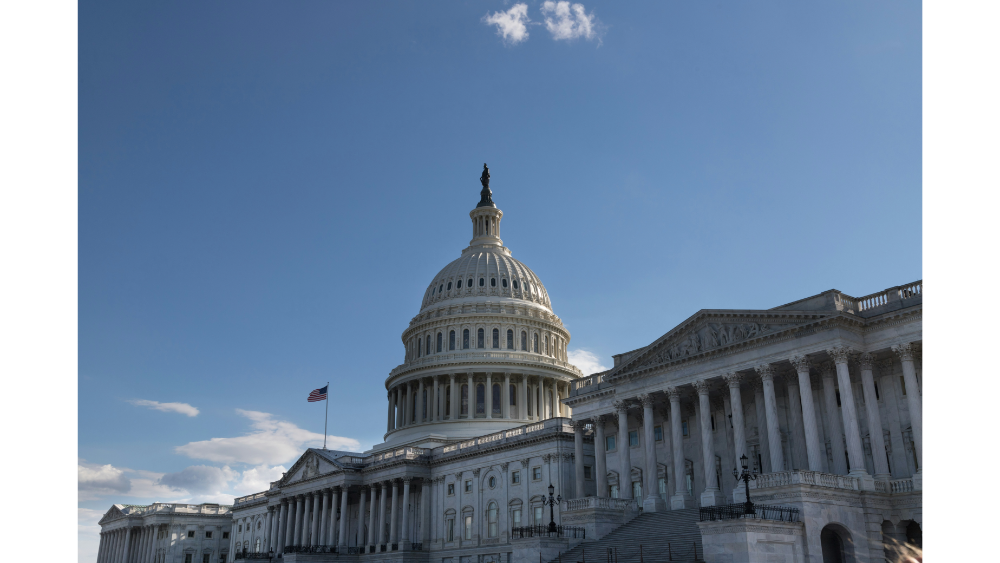In the summer of 2025, the Senate passed a sweeping new piece of legislation that has dominated discussions on Capitol Hill, reshaped national tax policy, and ignited debate across both parties. Commonly referred to as the Trump tax and spending bill, this legislation is poised to alter financial planning for millions of Americans, particularly affluent individuals, business owners, and investors.
The bill, formally known as the “One Big Beautiful Bill,” was crafted under the leadership of President Donald Trump and supported by Vice President JD Vance. It aims to make the 2017 tax cuts permanent, introduce new tax relief incentives, and fund sweeping spending cuts. It also substantially reshapes government programs like Medicaid, the Supplemental Nutrition Assistance Program, and student loan support, generating serious concern among some lawmakers and policy analysts.
At Towerpoint Wealth, we believe it is essential for our clients to stay ahead of fiscal policy changes that may impact their wealth and legacy strategies. Below is a comprehensive breakdown of the bill, its current status in Congress, and what it means for high-net-worth families planning for the future.
What Is the Trump Tax and Spending Bill?
The Trump tax and spending bill is a multi-trillion dollar legislative package combining tax reform with government spending realignment. After significant negotiations in the Senate, the bill passed in June by the narrowest of margins, with Vice President JD Vance casting the decisive tie-breaking vote.
Now in the hands of House Republicans, the version of the bill is undergoing final edits ahead of a final procedural vote expected before the July 4 recess. The White House has urged swift passage, holding several press conferences in Washington to underscore what President Trump called a “clear mandate” from the American people to reshape tax policy and cut wasteful spending.
Major Tax Provisions in the Senate Version

Making the 2017 Tax Cuts Permanent
The centerpiece of the Senate bill is the permanent extension of the 2017 Tax Cuts and Jobs Act. Originally scheduled to expire in 2026, these tax cuts reduced marginal income tax rates, doubled the standard deduction, and slashed the corporate tax rate from 35% to 21%.
This extension will benefit many married couples, small business owners, and investors by preserving favorable tax treatment across multiple income levels. The White House estimates that this portion of the legislation alone accounts for over $3.8 trillion of the total package cost.
New Deductions and Credits
The Trump tax and spending bill includes new deductions designed to appeal to working-class and middle-income households. These include:
- Full deduction of reported tip income
- Deduction for overtime pay for households under $250,000
- A $7,500 deduction for the purchase of U.S.-made vehicles
While these may not directly affect high-net-worth clients, they represent broader political efforts by House Republicans and the White House to brand the bill as “working-family friendly.”
Adjustments to State and Local Taxes
Though a full repeal was debated, the state and local taxes (SALT) deduction cap remains in place at $10,000. Some Republicans, particularly from South Carolina and other high-tax states including R La representatives, expressed concerns about this, but the White House prioritized simplicity and predictability.
Child Tax and Savings Accounts
The bill increases the child tax credit from $2,000 to $2,500 through 2028 and introduces a new savings vehicle known as the “Trump Account.” This federally sponsored account allows up to $1,000 per child annually, with a $5,000 family cap. These provisions were championed by other Republicans in the Senate as a modern approach to family support.
Spending Cuts and Social Program Changes

Medicaid Cuts and Healthcare Changes
The Trump tax and spending bill includes significant cuts to Medicaid, estimated to reduce federal spending on the program by 18% over 10 years. Work requirements and state-managed cost-sharing structures are expected to result in millions of low-income Americans facing potential health insurance coverage changes. Advocacy groups warn that disabled Americans and seniors may be most at risk to lose coverage.
The White House defends the changes as fiscally responsible, pointing to duplication across federal and state health care programs.
Food Assistance and SNAP Reform
The bill restructures the Supplemental Nutrition Assistance Program (SNAP), delegating implementation to the states and reducing total benefits by approximately 20%. These cuts are designed to reduce reliance on federal support, but have triggered strong opposition from Democrats, who see it as a disproportionate burden on vulnerable communities.
Education and Clean Energy Rollbacks
Support for federal student loan forgiveness and clean energy subsidies has been scaled back or eliminated entirely. These spending cuts are seen by fiscal hawks as essential to reduce the national deficit, but may impact younger generations seeking higher education support or sustainable investment incentives.
Defense Spending and Border Security Funding
The bill allocates over $150 billion in new government spending to expand military readiness and fund missile defense initiatives. An additional $175–350 billion has been earmarked for immigration enforcement and border wall construction, aligning with President Trump’s promise to “make America great again” through national security investment.
Fiscal Impact and Market Outlook

Rising Deficits, Debt Ceiling, and National Debt
The Congressional Budget Office (CBO) estimates that the version of the bill passed by the Senate will increase the national debt by at least $3.4 trillion over the next decade. Even with economic growth projections, the anticipated deficit increase has raised alarms among fiscal hawks and moderate lawmakers.
The bill also includes a provision to raise the debt ceiling by $5 trillion to allow continued government borrowing. This contentious issue has caused some Republicans to have struggled mightily to unify behind the measure.
In total, the bill would push the U.S. debt-to-GDP ratio above 130%, raising the possibility of future austerity measures or higher taxes to close the gap.
Potential Effects on Interest Rates and Money Flow
With a rising deficit, the Federal Reserve may respond by adjusting interest rates to manage inflation and bond yields. For Towerpoint clients with significant bond holdings or fixed-income assets, this could impact portfolio performance.
As the government faces higher borrowing costs, we anticipate market volatility that may create new opportunities for tactical rebalancing.
Political Path Forward: Will the House Pass the Bill?
The bill now faces a crucial final vote in the House, where Republicans hold a slim majority. Several key figures, including Ralph Norman from South Carolina and Chip Roy from Texas, have expressed concerns about the bill’s cost and the scope of its social spending reductions.
As of Wednesday morning, the House has not yet held a final procedural vote, but pressure from the White House is mounting. President Trump, flanked by Vice President JD, is meeting privately with House Republicans to ensure party unity. There is little room for error, and the House-passed version must closely match the Senate version to avoid triggering a lengthy reconciliation process.
This situation underscores the political challenges in Washington, where the American people gave a clear mandate but the party has struggled mightily to deliver on it amid accusations of democrat failure.
Strategic Considerations for Towerpoint Wealth Clients

Tax Planning Opportunities
With the extension of the 2017 tax cuts and the introduction of new tax incentives, clients may wish to accelerate income into current years, convert traditional IRAs to Roth IRAs, and review charitable giving strategies. Capitalizing on favorable tax treatment today can provide meaningful long-term benefits.
Additionally, those living in high local tax jurisdictions should continue to factor SALT limitations into their planning.
Investment Adjustments
We anticipate near-term market volatility and interest rate movement. This environment favors tactical asset allocation, especially in fixed income. We are also monitoring the effects of reduced clean energy subsidies on ESG-focused investments.
Clients should consider diversifying globally and adjusting bond duration to navigate a rising rate environment.
Legacy and Estate Planning
With estate tax thresholds untouched for now, families should consider strategic gifting and trust planning before future policy changes. The newly introduced “Trump Account” may serve as a simple savings platform for next-generation wealth transfers, even if limited in scope.
Frequently Asked Trump Tax and Spending Bill Questions
How will this affect my 2025 tax return?
If the House passes the bill and the White House signs it into law, the extended tax cuts and new deductions will apply to the current tax year. We recommend reviewing withholding and estimated payments accordingly.
Should I change my charitable giving plan?
Possibly. If you are bunching deductions or using donor-advised funds, this is a good time to review your strategy in light of potential changes in AGI thresholds and new deduction rules.
Will Medicaid cuts affect my family?
If your estate planning or retirement strategy includes support for loved ones who rely on Medicaid, these changes could be significant. We encourage you to consult with us to assess any exposure.
What is the Trump Account and how does it work?
This is a federally administered savings vehicle that allows up to $1,000 in refundable child credits to be contributed annually, with a cap of $5,000 per family. While modest, it could complement a broader intergenerational gifting strategy.
Should I expect more tax changes soon?
Possibly. If political control shifts or inflation spikes, future administrations could seek to reverse some tax provisions. That is why proactive planning under current rules is essential.
Final Thoughts
The Trump tax and spending bill represents one of the most significant shifts in U.S. fiscal policy in recent memory. With wide-reaching changes to tax, healthcare, and social programs, it presents both opportunity and risk for high-net-worth individuals. While the political outcome remains uncertain, one thing is clear: comprehensive, strategic planning is essential.
At Towerpoint Wealth, we help you make sense of legislation, manage volatility, and position your wealth with foresight and purpose. Our role is to serve as your fiduciary partner through every economic and political cycle.
Have questions about how the Trump tax and spending bill could affect your portfolio or plan? Contact Towerpoint Wealth today for a personalized review.







